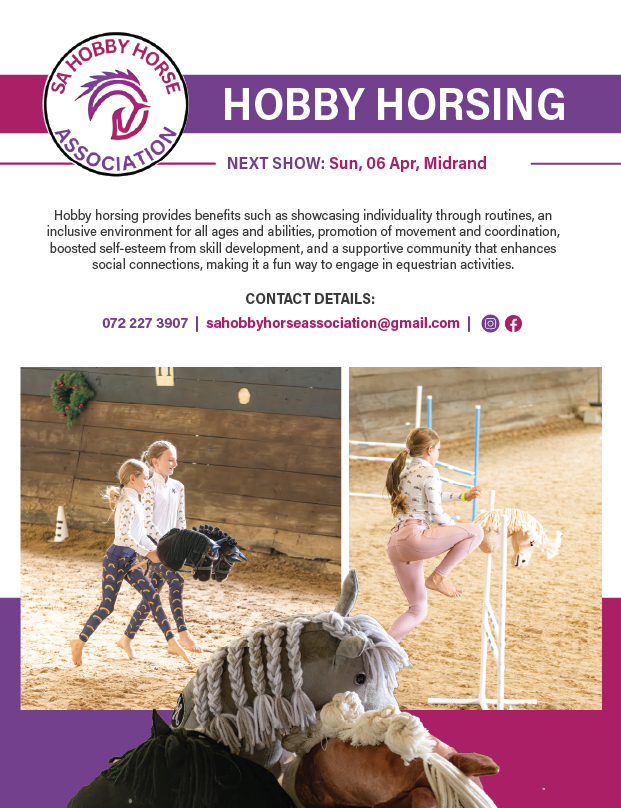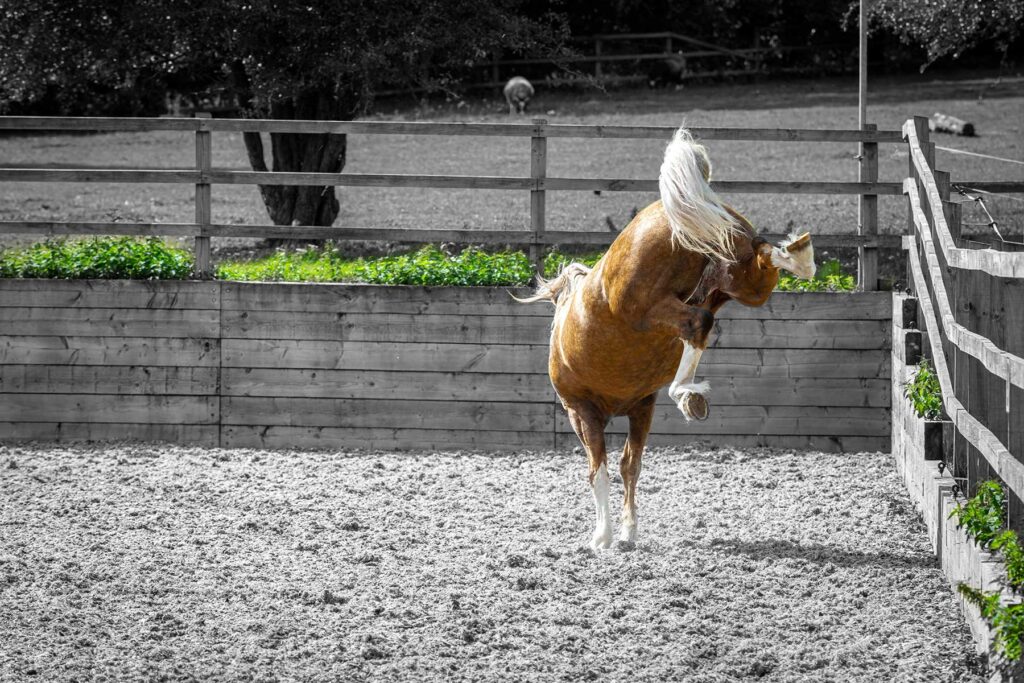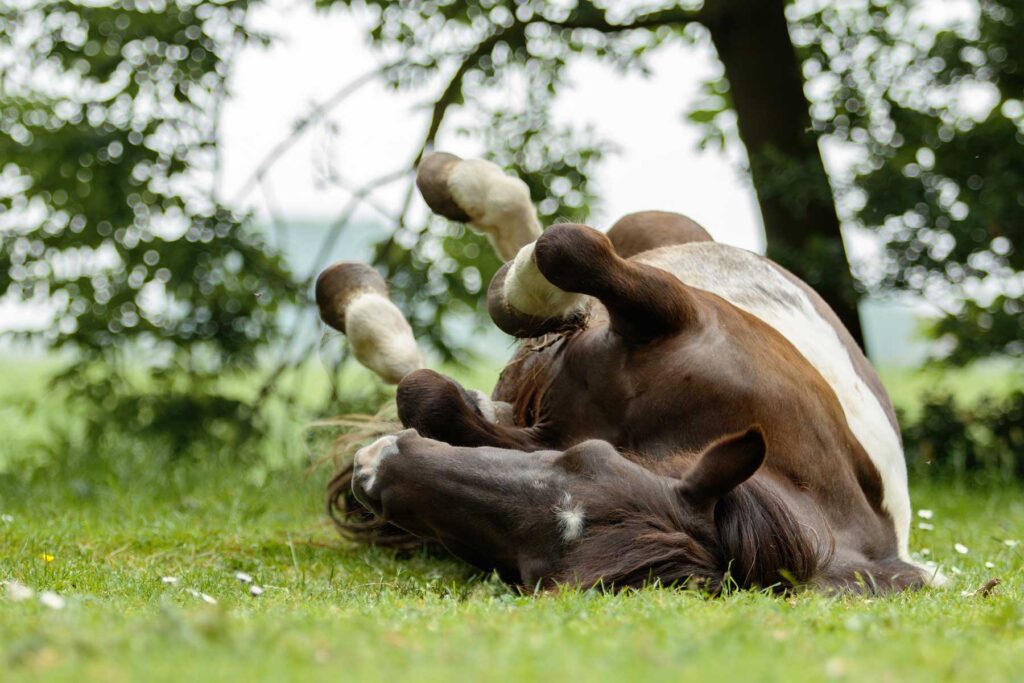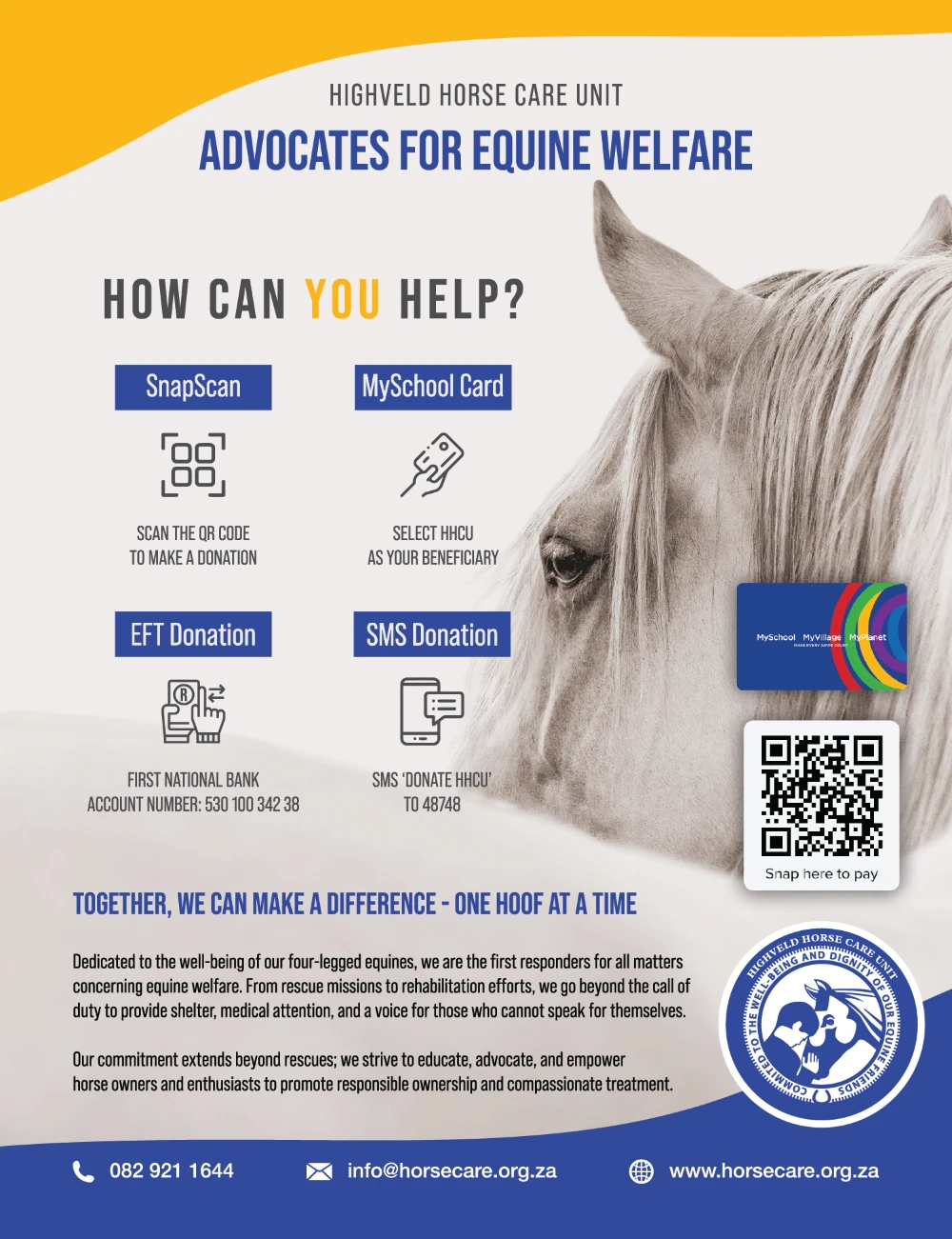DIGITAL ISSUE 40 | 2025
Dear Pony People,
We’re back in the saddle!
After a short break, we’re so excited to bring you the brand-new edition of HQ Pony Magazine — just in time for the 2025 Youth Champs! Whether you’re competing, cheering on your teammates, or just pony-mad all year round, this magazine is for you.
Inside this issue, you’ll find fun features, cheeky pony facts, riding tips, quizzes, and loads more. We’ve even brought back ASKPONY, where we answer all your funniest, smartest, and most unexpected horsey questions.
HQ Pony is made just for young South African riders — and we want you to be part of it. If you have a story, drawing, question, or a photo of your pony you’d like to share, send it our way. We’d love to feature our amazing readers in every edition.
You’ll also spot our HQ Pony Press Team out and about at Youth Champs, interviewing riders and capturing all the fun. So if you see us with a mic or camera, come say hi!
Here’s to ponies, friendship, and a magical week ahead in Western Shoppe’s Winter Wonderland.
Happy reading — and happy riding!
Lizzie and
the HQ Pony team xxx
Dr Lizzie Harrison | Editor
DIGITAL ISSUE 40 | 2025
contents
HQ Pony Glossary
A to Z of ponies
Surviving a Long Show Day
Your ultimate guide to staying warm, fuelled, and fabulous at a show
Fun Polework Exercises for Pony Riders
These ten easy exercises will help you and your pony get better together!
Bring My Bow
Jenna Kershaw introduces us to her beautiful horse, Bring My Bow
Pony Care Countdown
Take care of your pony like a pro – with this simple, step-by-step checklist!
Why Do Ponies Buck?
We’ve all seen it—or maybe even felt it!
ASK Pony
All your questions answered
HQ Pony Glossary
A TO Z OF PONIES
After a break from our monthly editions, we thought we’d remind ourselves of all things ‘PONY’ with a quick run-through of our A-Z of pony terms.
Let us know if there’s any you’d swap for something else!




























surviving a long
-----------------------------
show day
Your ultimate guide to staying warm, fuelled, and fabulous at a show
Horse shows are exciting — the buzz, the ponies, the prizes! But let’s be honest… they can also be very long. Cold mornings, tired feet, hungry tummies, and endless waiting between classes are all part of the game.
So how do you stay on top of your game and still have fun all day? Here’s our survival guide just for you.
1. Dress smart – layer like a pro
-----------------------------------
Even if it’s freezing in the morning, things can warm up fast once the sun comes out or you start riding. The trick? Wear layers that you can easily take off or put back on:
- A thermal base layer (like a riding top or vest)
- A warm hoodie or riding fleece
- A waterproof outer layer or jacket
- Gloves, hat, and a spare pair of socks (trust us)
Top tip: Keep a blanket in the car or horsebox for you to snuggle with between classes. You’ll be the warmest person at the showground!
2. Snack like a champion
---------------------------
You need energy to ride well. That means packing snacks that give you brain power and pony power — not just sugar. Here are some show day favourites:
- Sandwiches or wraps
- Fruit (bananas, apples, berries)
- Trail mix or mixed nuts
- Yoghurt or mini cheeses (pop in a cooler bag)
- Crackers or energy bars
- Lots of water — not just juice or fizzy drinks
Pro tip: Eat small amounts regularly instead of one big meal. It keeps your energy steady and stops that tired, hungry feeling before your class.
3. Stay super organised
--------------------------
The secret to a smooth show day is being prepared before you leave home. The night before, pack your:
- Show clothes (and spares!)
- Riding boots and helmet
- Gloves, hairnets, number bib, jacket
- Pony’s halter, bridle, saddle, grooming kit, boots, and haynet
- Entry number and test sheets
- Water bottle, snacks, sunscreen, hand wipes
Use a checklist and tick things off as you go — trust us, future you will say thank you!

4. Keep calm and breathe
----------------------------
Waiting around can be boring. Or nerve-wracking. Or both! But there are lots of things you can do to stay calm and focused:
- Watch other riders and cheer on your friends
- Go over your test or course in your head
- Stretch or walk around to keep your body moving
- Take deep breaths if you feel nervous
- Hug your pony (that always helps)
It’s okay to feel butterflies — they just mean you care.
5.Look after your pony too
-----------------------------
Your pony also needs support during a long show day:
- Bring a haynet and water bucket so they can snack and stay hydrated
- Pack a rug for after your ride so they don’t get chilly
- Give them breaks from standing — hand grazing is perfect
- Don’t sit on your pony when not warming up or riding – it can make his back sore!
- Always check girths, boots, and tack carefully before riding
Final tip – have fun!
----------------------
You might not win every class. You might fall off. You might forget your test for two seconds (hey, it happens!). But if you show up, ride kindly, care for your pony, and enjoy the experience — you’ve already won.
So zip up your boots, check your girth, and get ready for a great day out. You’ve got this!

TEXT: PENELOPE CAMPBELL-HORNE
FUN POLEWORK EXERCISES FOR
PONY RIDERS
Polework is a great way to make riding more fun while helping your pony improve balance, rhythm, and coordination. These ten easy exercises will help you and your pony get better together!

1. Single pole practice
Put one pole on the ground. Walk, trot, and canter over it. Try to keep your pony moving in a steady
rhythm and count your strides as you go.

2. Walk and trot poles
Lay four to five poles in a straight line. Walk: Space them 1.2 metres (about 1 big step) apart. Trot: Space them 1.4–1.5 metres (about 1.5 big steps) apart. This helps your pony stay straight and smooth.

3. Canter poles
Set three to four poles 2.7–3 metres apart (about three big steps). Canter over them while keeping your pony balanced and steady. Try to count the strides between each pole.

4. Bounce poles
Place poles 2.7 metres apart (about three big steps). Trot in, then let your pony canter through the poles. This helps with balance and quick reactions.

5. One-strided jump
Put a trot pole 2.4 metres (about 2.5 big steps) before a small jump, then another jump 5.5 metres (about 6 big steps) away. Trot in, jump the first, take one canter stride, and jump the second.

6. Fan poles
Lay four to five poles in a fan shape. • Make the inside ends 0.6 metres apart (about half a big step). • Make the outside ends 1.2–1.5 metres apart (about 1–1.5 big steps). Ride over them in a curve to help your pony bend and stay flexible. Make sure to ride this exercise equally in both directions.

7. Serpentine poles
Lay three to four poles in a straight line and put cones between them. Weave through the cones and trot over the poles. Try cantering for a challenge!

8. Raised poles
Use four trot poles and raise one end of each by 10–15 cm using a cavaletti block. This makes your pony pick up his feet more and use his muscles more.

9. Figure-eight over poles
Place two poles 1.5 metres apart (about 1.5 big steps). Ride a figure-eight pattern over them. This helps with turns and balance. Try cantering and switching leads in the middle if you want a challenge.

10. Build-a-line
Start with one trot pole. Then add another 5.5 metres away (about 6 big steps) for a one-stride canter distance. Keep adding poles or little jumps to practice adjusting your pony’s stride through the line.
Helpful tips
- Stay safe: Make sure the poles are steady and on good footing.
- Adjust the distance: Some ponies need bigger or smaller gaps between poles.
- Take your time: Start simple and make it harder as you improve.


bring my bow
Thank you to Jenna Kershaw for introducing us to her beautiful horse, Bring My Bow.
Here’s what she had to say:
“Please see attached photos of my beautiful horse, Bring My Bow. She is 18 years old and measures 150cm. We compete in affiliated Dressage shows and hope to start Showing at the next affiliated show. I only met Bow in June 2024 and went to SA Champs with her, where we won the Children’s Prelim Dressage. She is the kindest horse in the world, and she means the world to me.
These photos were taken by Meg and Amy White of Tantalising Twins at a photoshoot for my 12th birthday in November last year.
I hope you like them as much as I do.”


Pony care countdown
What to do before and after each ride
Take care of your pony like a pro – with this simple, step-by-step checklist!
Print it out. Stick it in your tack room. Tick it off every time!
Is your pony bright, happy and moving normally?
No cuts, heat, or swelling on legs or body
Hooves picked out – no stones or mud trapped!
Tail brushed and free from knots
Clean around eyes, nose, and under the tail
Curry comb to loosen dirt and hair
Dandy brush to flick off mud
Soft brush on face and legs
Sponge or cloth on sweaty areas from last ride
Saddle pad clean and flat
Girth not twisted or cracked
Bit clean with no dried food or gunk
Stirrups and leathers adjusted for you
Saddle placed carefully, not too far forward
Girth tightened gently and evenly
Bridle on with no twisted straps
Bit sitting correctly and comfortably

Helmet on and done up properly
Gloves, boots, and a big pony-loving smile!
Walk your pony to loosen up before asking for more

AFTER YOU RIDE

Walk your pony on a loose rein to let them cool down
Dismount safely and loosen the girth
Lead them until breathing rate and skin temperature feel normal

Take off the saddle and pad gently
Remove the bridle slowly – don’t bump their teeth
Check for any rubs or sweat patches
Hang the tack neatly to dry

Sponge off sweaty spots (under saddle and girth)
Use a soft brush to remove dust or loose hair
Pick out the hooves again
Offer a gentle scratch or rub as a thank you!

Offer water if it’s safe
Rug up if it’s cold and your pony is clipped
Fly spray or sunscreen if needed
Return to the paddock or stable with a pat

Clean your bit – ponies don’t like old slobber!
Hang up tack and tidy your gear
Sweep the grooming area
Tell your pony they are the best
top tip
Try to do your ‘before’ and ‘after’ routines the same way each time. Ponies love routine—and it helps you not forget anything!



Why do ponies buck?
Is it excitement? Is it discomfort? Or is your pony trying to tell you something? Let’s find out!
We’ve all seen it—or maybe even felt it! A pony suddenly kicks up their back legs, sometimes giving a little jump, sometimes a big bounce. This behaviour is called bucking, and while it might look dramatic, it’s one of the ways ponies communicate.
Let’s explore why ponies buck and what they might be trying to say.
First of all: What is a buck?
Bucking is when a pony lowers their head and lifts or kicks their back legs into the air. It’s a totally natural movement that ponies also use when playing with their friends or letting off steam in the paddock.
So while it might feel surprising in the saddle, it doesn’t automatically mean anything is wrong.
Sometimes bucking means your pony feels full of energy!
Ponies, just like people, can get excited, especially when they’ve had a rest day, the weather is cooler, or they’re feeling fresh.
A quick buck during a canter or after a jump might simply mean:
“I’m feeling great today!”
This type of bucking is playful and usually short-lived. If your pony tends to feel fresh, it can help to give them a lunge before riding, especially after a few days off.

Sometimes, though, bucking can mean discomfort or pain
Even though it might be nothing to worry about, it’s still really important to know that bucking can be a sign your pony is uncomfortable somewhere in their body.
Ponies might buck if:
- Their back is sore
- Their saddle doesn’t fit properly
- They’re feeling stiff or tight in their muscles
- They have ulcers or sore teeth
- Something hurts when they move in a certain way
If your pony suddenly starts bucking, especially in canter or after a new activity, it’s a good idea to chat with your instructor and possibly your vet or physio. Tack checks and a general health check can make a big difference.
Sometimes ponies buck when they’re confused
Imagine if someone asked you to do something you didn’t understand—how would you feel?
Ponies sometimes buck if they’re unsure what’s being asked or feel overwhelmed. This can happen when:
- They’re learning something new
- The rider’s signals are unclear or too strong
- They’re feeling tense or worried
If your pony seems anxious, slowing things down, going back to basics, and staying calm can help. Kind, clear riding builds confidence—for both of you!
Can ponies buck out of habit?
Some ponies learn to buck in certain situations—for example, when asked to canter or go over a jump—because they’re used to doing it. This doesn’t mean they’re being badly behaved, just that they’ve made an association with that movement.
It’s not their fault—they’re just repeating what they’ve learned. The best way to help is to stay calm, work with an instructor, and help your pony feel strong, balanced, and relaxed.
How can I tell what my pony’s buck means?
Here’s a quick guide:
Why they might buck | What you might notice |
Feeling fresh | Ears forward, happy expression, happens during fun activities |
Discomfort or pain | Ears back, tail swishing, stiff movement, sudden behaviour |
Feeling confused | Hesitation, tension, unsure body language |
Habit or association | Bucking in similar situations every time |

What to do if your pony bucks
- Stay calm and balanced.
- Check their body and tack. Ask a grown-up or your coach to help.
- Be kind and clear. Use gentle, steady signals and lots of praise.
- Work with a pro. Your riding instructor, vet, or physio can help figure out what’s going on.
- Don’t panic! Most ponies can learn to feel confident and happy again.
Final thoughts
Bucking might feel scary, but it’s one of the few ways a pony can show how they feel. Whether they’re saying “I’m full of beans!” or “Something feels wrong,” it’s up to us to listen kindly and help them feel safe, strong, and understood.
Ponies don’t buck because they’re being mean. They buck because they’re trying to tell us something. And once we learn to listen, we become even better pony partners.
QUIZ: Why did my pony buck?
Select the answers that feel true for your ride today!
Now let’s check your answers!
Mostly A’s – Your pony might be feeling fresh!
It sounds like your pony had lots of energy and needed to let it out. This kind of buck is usually playful, but make sure they get a good warm-up or lunge first next time.
Mostly B’s – Your pony might be unsure or confused
Your pony might not fully understand what’s being asked. Try using clear, gentle aids, and don’t be afraid to go back a step. Everyone learns at their own pace!
Mostly C’s – Your pony might be uncomfortable
If bucking is becoming regular or happens during normal things, your pony could be feeling sore or unhappy in their body. Ask your instructor or parent to check saddle fit and talk to your vet or physio.
Remember: Bucking is your pony’s way of talking. If we listen kindly and work as a team, we can help them feel their best.


ASKPONY: Why do ponies roll in the mud?
A: Because it feels amazing!
Ponies love a good roll to scratch their backs, dry off sweaty spots, or just enjoy the feeling. Rolling in mud can also help cool them down and keep flies away.
It’s not great for your grooming kit, but it’s completely natural — they’re not trying to make you late for your lesson (promise!).

ASKPONY: Why does my pony sometimes bite the grooming brush?
A: He’s not being rude — he might be itchy or ticklish.
When you hit a spot that feels good or tickles, some ponies start nibbling in the air or even on the brush. It’s called a grooming response.
Just be sure he’s not doing it out of grumpiness because he is sore, and always stay safe by keeping your hands and brushes out of his mouth.
>> If you are worried
If you’re worried that your pony might be sore and that’s why he is trying to nibble the brush when you brush specific areas, speak to an adult about contacting your vet or physiotherapist.

ASKPONY: Can ponies jump as high as horses?
A: Yes – some of them can jump huge!
While ponies are shorter than horses, many have big hearts and strong back ends. Top jumping ponies have cleared fences over 1.40m! Of course, it depends on the pony’s build and training, but don’t let size fool you — plenty of ponies can fly!



